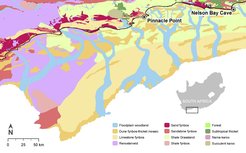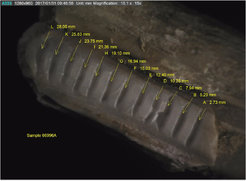Submerged Shelf in South African Cape Was Ideal Ecosystem for Pleistocene Homo Sapiens
Using isotope analysis of Pleistocene human prey, researchers show local residence of medium-large mammals in Paleo-Agulhas Plain roughly 150,000 years ago

Modeled reconstruction of vegetation on the maximally expanded Paleo-Agulhas Plain during the Last Glacial Maximum. The black line indicates the location of the modern coast of South Africa.
The southern Cape Coast of South Africa is a critical region for studying the emergence of our species Homo sapiens. From this region come some of the earliest examples of art, technological complexity, and symbolic ornamentation. Although often associated with the use of reliable marine resources, during times of low sea level in the Pleistocene, a vast shelf would have been exposed providing a different set of resources, including medium-large game. It has remained poorly understood, however, how abundant and accessible these animals were for some of our early ancestors.

Dino-Lite photograph of an Alcelaphus (antelope) tooth with bulk enamel samples extracted along the length of the tooth.
In a new study published in Quaternary Science Reviews, a multidisciplinary, international, team, including members of the Department of Archaeology at MPI-SHH, applied stable isotope analysis to the preserved teeth of medium-large mammals found at a hyaena den dating to around 150,000 years ago. The researchers hoped to determine whether these mammals were locally available all year-round or whether they appeared in seasonal bursts. The geochemistry of all the animals was consistent with local residence, indicating that, when exposed, the shelf in the region provided an ideal ecosystem for human inhabitants.

